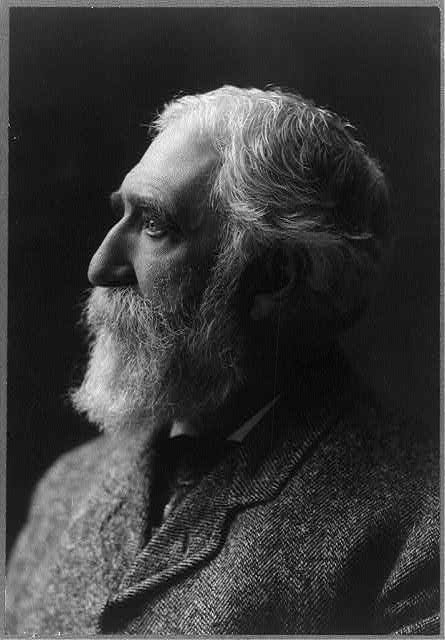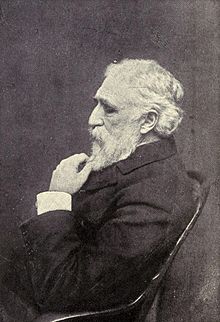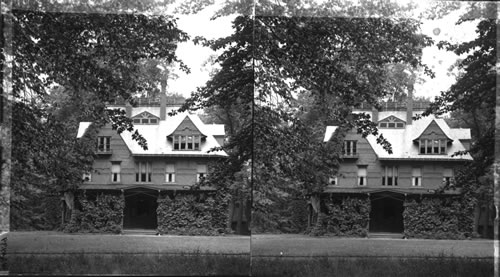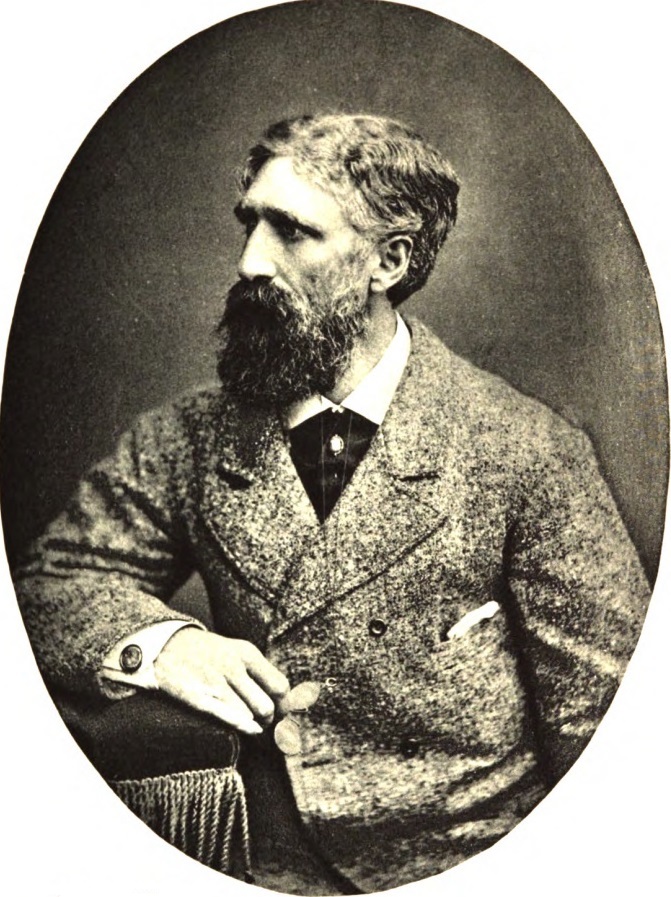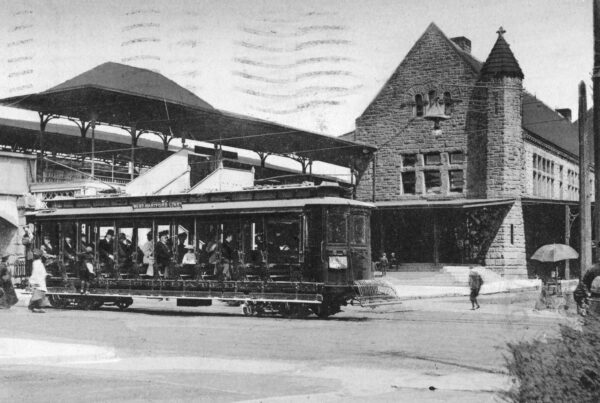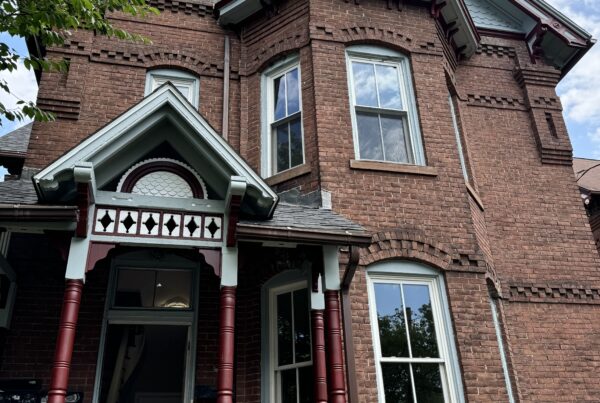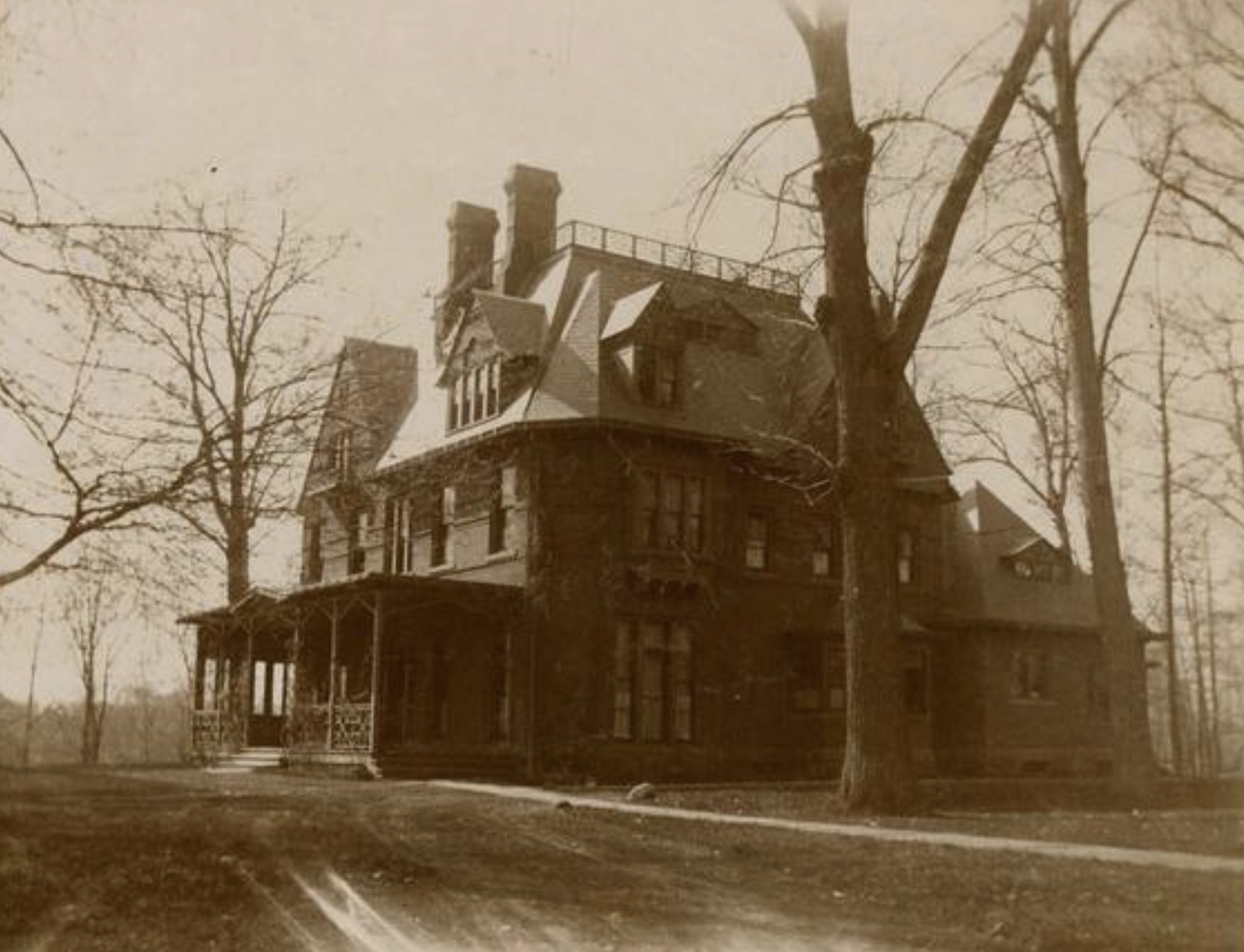
Charles Dudley Warner Residence, Hartford, Connecticut:
In Hartford’s Nook Farm neighborhood there once stood the residence of famed author, Charles Dudley Warner. His Victorian-era mansion on Hawthorn Street was embellished with English Tudor themes. The Queen Anne Revival home was erected around 1870, but it fell into disrepair and was later demolished. It was once capped with seven gables – a unique feature at the time.
Warner was an economist, travel writer, essayist, editor of The Hartford Courant and collaborator with Mark Twain on The Gilded Age: A Tale of Today. Born into a Puritan family in Plainfield, Massachusetts, on September 12, 1829, Warner spent his formative years in Charlemont, Massachusetts – the setting of his memoir Being a Boy (1877). He then moved to Cazenovia, New York, and graduated from Hamilton College in Clinton, New York.
Before studying law at the University of Pennsylvania, he worked as a railway surveyor in Missouri. Next he went to Chicago to practice law from 1856 to 1860 but soon relocated to Connecticut to become Assistant Editor of The Hartford Press. By 1861 he had become Editor, a position he held until 1867. When the Hartford Press was bought out by The Hartford Courant, Warner became the Courant’s co-Editor along with Joseph R. Hawley.
Warner joined Harper’s Magazine in 1884 and wrote two columns entitled The Editor’s Drawer and The Editor’s Study. He edited The American Men of Letters series, in which he contributed a biography of Washington Irving (1881).
The people of San Diego, California, so appreciated Warner’s flattering description of their city in his book Our Italy that they named three consecutive streets in the Point Loma neighborhood after him: Charles Street, Dudley Street and Warner Street. He also edited a large edition of Library of the World’s Best Literature (1897). At the time of his passing, Warner was in the midst of authoring a biography of his friend and American landscape painter, Frederic Edwin Church.
Warner penned the famous quip, “Everybody complains about the weather, but nobody does anything about it.” Mark Twain used Warner’s quote in some of his many humorous lectures, and Warner’s joke is often misattributed to his friend, Twain. Another well-known phrase, “Politics makes strange bedfellows,” is often credited to Warner. Here’s a collection of literature by Charles Dudley Warner:
Selected Works
- My Summer in a Garden and Calvin [his cat], A Study of Character (Boston: James R. Osgood & Co., 1870)
- Saunterings (1872), descriptions of travel in Western Europe
- BackLog Studies (1872)
- Baddeck, And That Sort of Thing (1874)
- My Winter on the Nile (1876)
- In the Levant (1876)
- In the Wilderness (1878)
- A Roundabout Journey, in Europe (1883)
- On Horseback, in the Southern States (1888)
- Studies in the South and West, with Comments on Canada (1889)
- Our Italy, etc. [A description of Southern California.] (1891)
- The Relation of Literature to Life (1896)
- The People for Whom Shakespeare Wrote (1897)
- Fashions in Literature (1902)
- Essays
- A-Hunting of the Deer (1875)
- As We Were Saying (1891)
- As We Go (1893)
- Novels
- The Gilded Age: A Tale of Today (in collaboration with Mark Twain, 1873)
- Their Pilgrimage (1886)
- A Little Journey in the World (1889)
- The Golden House (1894)
- That Fortune (1899).
When Warner died on October 20, 1900, Mark Twain served as a pallbearer at his funeral. Around 1904, the Charles Dudley Warner residence was purchased by the newly married Thomas Norvel Hepburn and Katharine Houghton Hepburn. Warner’s estate soon became a home for their growing family. They had six children, including 4-time Academy Award winning actress, Katharine Hepburn (named after her mother) who was born in 1907.
Most of the Hepburn family were doctors, political activists, and artists. In 1908, an British suffragette named Emmeline Pankhurst visited the Hepburn family. Pankhurst’s visit to the Warner house spurred Katharine Houghton Hepburn to become a leading activist for women’s rights. The Hepburn’s were at the forefront of politics and culture while living at the Warner mansion.
They hosted countless social gatherings and artful performances. In a grove on the property, they had the renowned Hartford architect George Keller design a 1,000 seat amphitheatre contrived mostly of greensward. In 1908, thousands of attendees watched William Shakespeare plays in Warner’s side yard, including, A Midsummer Night’s Dream and As You Like it. It was serendipitous that Katharine Hepburn would later visit Hartford on a East Coast tour of her play, As You Like It in 1950.
The home was demolished around 1960. Today, the location of the estate is hardly remembered. There’s supposedly a small plaque commemorating the birthplace of Katharine Hepburn on the site. The forgotten tract of land can be viewed here: Google Maps.
View on Instagram: https://www.instagram.com/p/Ceb6j84Jqt5/
More on Twain and Warner from ConnecticutHistory.org: https://connecticuthistory.org/where-mr-twain-and-mrs-stowe-built-their-dream-houses/
Work cited:
1. Hartford Courant database on Newspapers.com
2. Wikipedia.org


